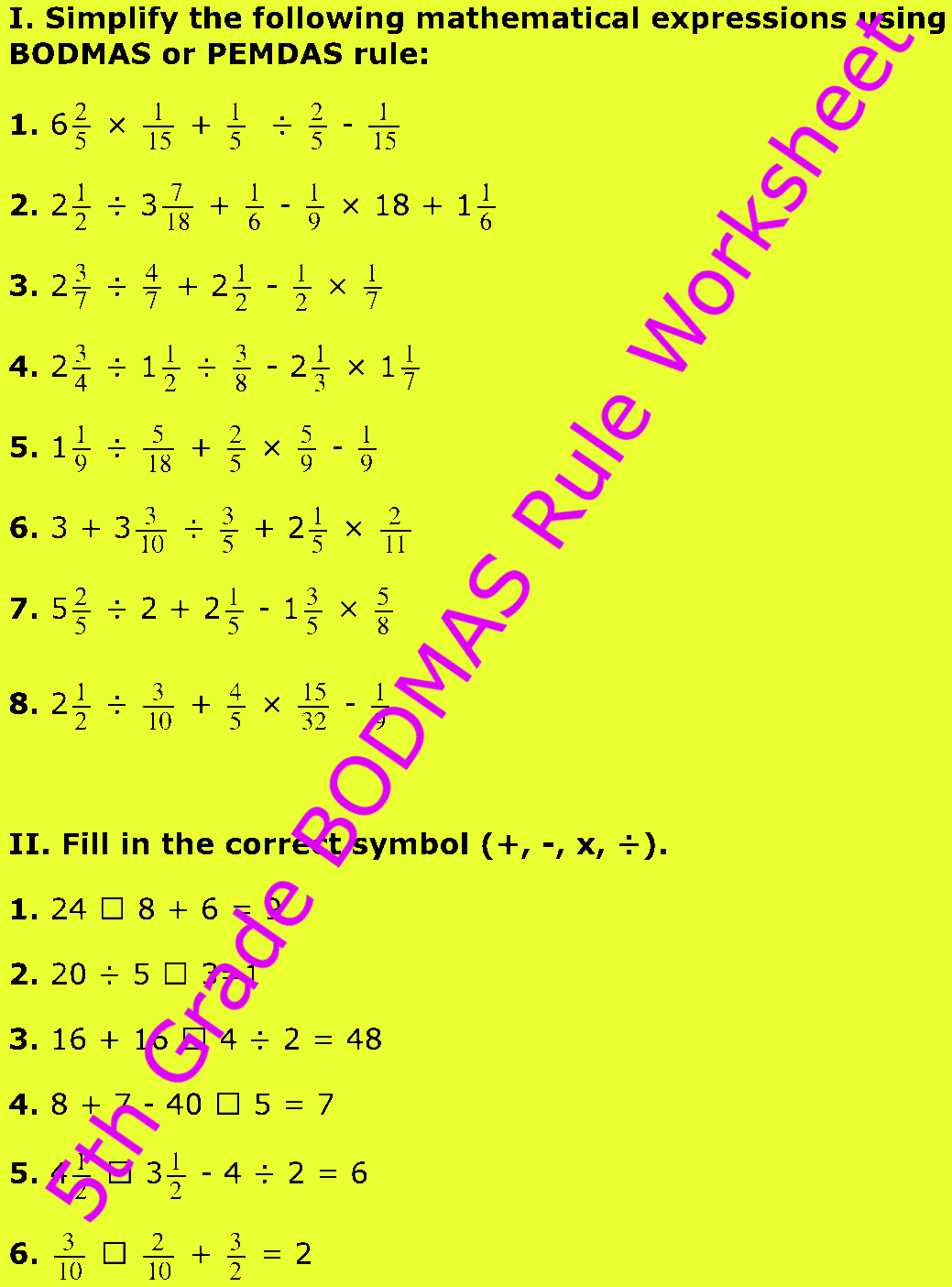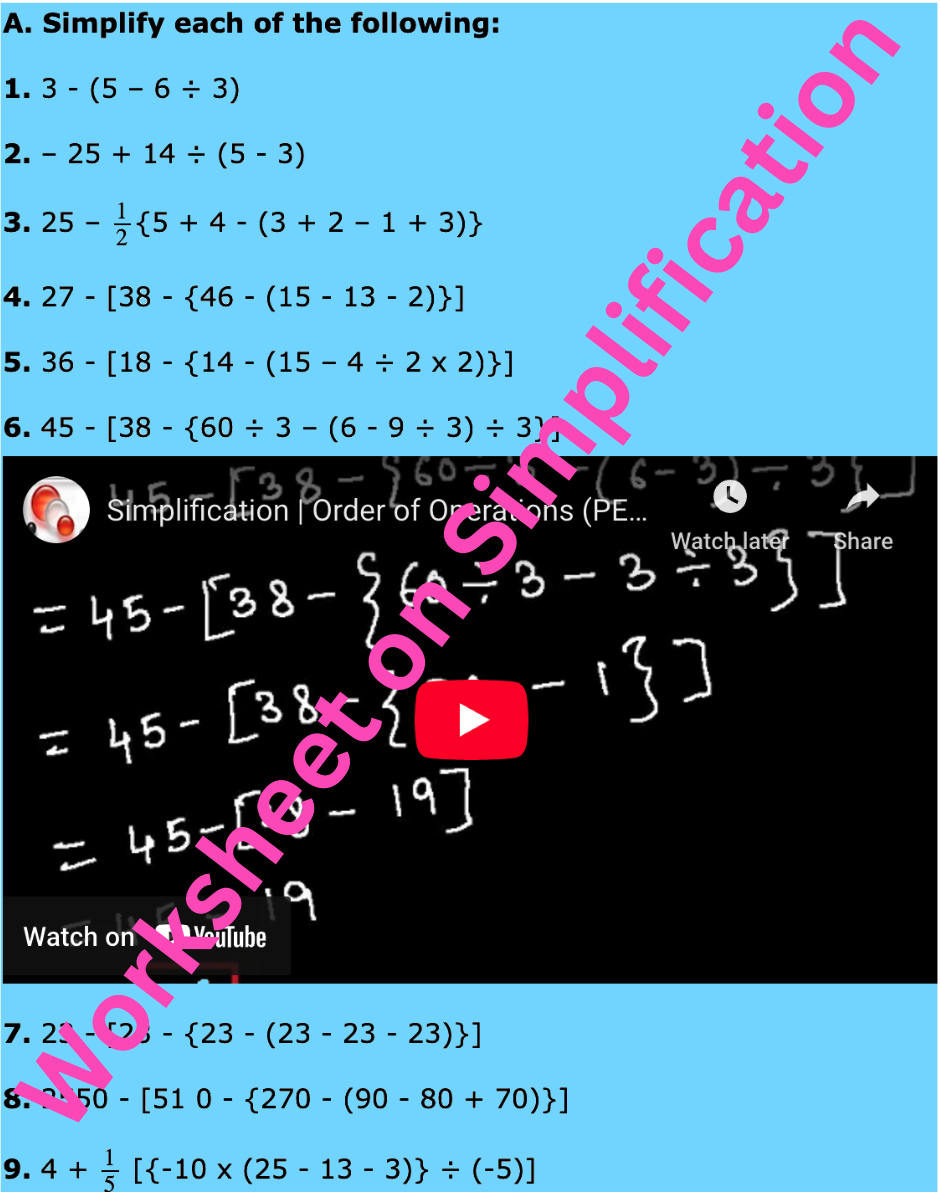Discount
In discount we will learn how to solve problems related to marked price, list price and discount.
Marked Price:
In big shops and departmental stores, every article is tagged with a card and its price is written on it. This is called the marked price of that article, abbreviated as MP.
For books, the printed price is the marked price.
List Price:
Items which are manufactured in a factory are marked with a price according to the list supplied by the factory, at which the retailer is supposed to sell them. This price is known as the list price of the article.
Discount:
In order to increase the sale or clear the old stock, sometimes the shopkeepers offer a certain percentage of rebate on the marked price. This rebate is known as discount.
Notes:
The discount is always reckoned on the marked price.
Selling price = (marked price) - (discount)
As:
'selling price' is the amount you actually pay for the thing when you purchase.
'marked price' is the general price of the thing without any discount.
'discount' is a percentage of the marked price.
Worked-out problems related on discount, selling price and marked price based on the above formula are discussed below with a detailed explanation.
1. The marked price of a ceiling fan is $ 1250 and the shopkeeper allows a discount of 6% on it. Find the selling price of the fan.
Solution:
Marked price = $ 1250 and discount = 6%.
Discount = 6% of Marked Price
= (6% of $ 1250)
= $ {1250 × (6/100)}
= $ 75
Selling price = (Marked Price) - (discount)
= $ (1250 - 75)
= $ 1175.
Hence, the selling price of the fan is $ 1175.
2. A trader marks his goods at 40% above the cost price and allows a discount of 25%. What is his gain percent?
Solution:
Let the cost price be $ 100.
Then, marked price = $ 140.
Discount = 25% of Marked Price
= (25% of $ 140)
= $ {140 × (25/100)
= $ 35.
Selling price = (marked price) - (discount)
= $ (140 - 35)
= $ 105.
Gain% = (105 - 100) % = 5%.
Hence, the trader gains 5%.
3. A dealer purchased a washing machine for $ 7660. He allows a discount of 12% on its marked price and still gains 10%. Find the marked price of the machine.
Solution:
Cost price of the machine = $ 7660, Gain% = 10%.
Therefore, selling price = [{(100 + gain%)/100} × CP]
= $ [{(100 + 10)/100} × 7660]
= $ [(110/100) × 7660]
= $ 8426.
Let the marked price be $ x.
Then, the discount = 12% of $x
= $ {x × (12/100)}
= $ 3x/25
Therefore, SP = (Marked Price) - (discount)
= $ (x - 3x/25)
= $ 22x/25.
But, the SP = $ 8426.
Therefore, 22x/25 = 8426
⇒ x = (8426 × 25/22)
⇒ x = 9575.
Hence, the marked price of the washing machine is $ 9575.
4. How much per cent above the cost price should a shopkeeper mark his goods so that after allowing a discount of 25% on the marked price, he gains 20%?
Solution:
Let the cost price be $ 100.
Gain required = 20%.
Therefore, selling price = $ 120.
Let the marked price be $x.
Then, discount = 25% of $x
= $ (x × 25/100)
= $ x/4
Therefore, selling price = (Marked Price) - (discount)
= $ {x - (x/4)
= $ 3x/4
Therefore, 3x/4 = 120
⇔ x = {120 × (4/3)} = 160
Therefore, marked price = $ 160.
Hence, the marked price is 60% above cost price.
Successive Discounts:
If two or more discounts are allowed one after the other then such discounts are known as successive discounts or discounts in series.
Suppose a discount of 25% is given on an article. Then on the reduced price a discount of 15% is given. In such a case, we say that successive discounts of 25% and 15% are given.
5. Find the single discount equivalent to two successive discounts of 20% and 10%.
Solution:
Let the marked price of an article be $ 100.
Then, first discount on it = $ 20.
Price after first discount = $ (100 - 20) = $ 80.
Second discount on it = 10% of $ 80
= $ {80 × (10/100)} = $ 8.
Price after second discount = $ (80 - 8) = $ 72.
Net selling price = $ 72.
Single discount equivalent to given successive discounts = (100 - 72)% = 28%.
● Profit, Loss and Discount
Calculating Profit Percent and Loss Percent
Word Problems on Profit and Loss
Examples on Calculating Profit or Loss
Practice Test on Profit and Loss
Practice Test on Profit Loss and Discount
● Profit, Loss and Discount - Worksheets
Worksheet to Find Profit and Loss
Worksheets on Profit and Loss Percentage
Worksheet on Gain and Loss Percentage
8th Grade Math Practice
From Discount to HOME PAGE
Didn't find what you were looking for? Or want to know more information about Math Only Math. Use this Google Search to find what you need.
Recent Articles
-
Counting Numbers from 1 to 50 | Match the Number | Missing Numbers
Apr 04, 25 03:46 PM
In counting numbers from 1 to 50, recognize the numbers, count and then join the numbers in the correct number order. Here we mainly need eye-hand coordination to draw the picture and maintain the num -
Counting Eleven to Twenty with Numbers and Words |Numbers from 11 - 20
Apr 04, 25 03:21 PM
Counting eleven to twenty with numbers and words are explained below. One ten and one more is eleven. Eleven comes after ten. One ten and two more is twelve. Twelve comes after eleven. -
5th Grade BODMAS Rule Worksheet | PEMDAS | Order of operations|Answers
Apr 03, 25 03:11 PM
In 5th Grade BODMAS Rule Worksheet you will get different types of problems on mathematical expressions involving different operations, mathematical expression with 'brackets' and 'of' and simplifying… -
Worksheet on Simplification | Simplify Expressions | BODMAS Questions
Apr 03, 25 02:58 PM
In worksheet on simplification, the questions are based in order to simplify expressions involving more than one bracket by using the steps of removal of brackets. This exercise sheet -
Divisible by 2 Video |Test of Divisibility by 2 Trick| Rules| Examples
Apr 03, 25 10:25 AM
A number is divisible by 2 if the digit at unit place is either 0 or multiple of 2. So a number is divisible by 2 if digit at its units place is 0, 2, 4, 6 or 8.





New! Comments
Have your say about what you just read! Leave me a comment in the box below. Ask a Question or Answer a Question.